Screening
Douglas Gordon
I had nowhere to go: Portrait of a displaced person
May 11–17, 2018
Anthology Film Archives, New York
anthologyfilmarchives.org
Anthology Film Archives will screen Douglas Gordon’s 2016 film I had nowhere to go: Portrait of a displaced person. The film is an intimate portrait of the legendary poet, film critic, and risk-taking curator Jonas Mekas, who had been dubbed “the godfather of American avant-garde cinema,” and who at ninety-four years old is also among the remaining few to have escaped and survived Nazi persecution.
Share
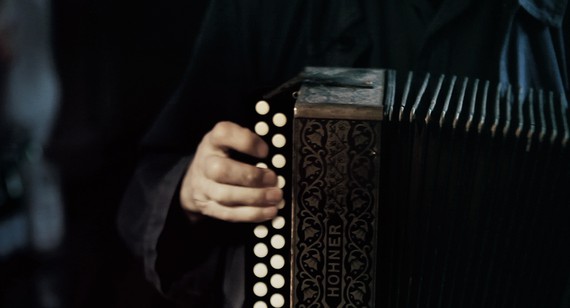
Douglas Gordon, I had nowhere to go: Portrait of a displaced person, 2016 (detail) © Studio lost but found/VG Bild-Kunst, Bonn 2018
Related News
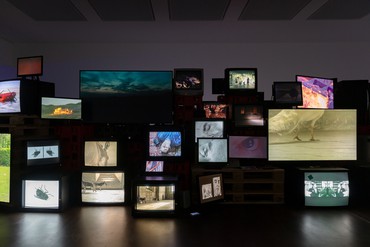
Screening
Douglas Gordon
Film as Raw Material
February 22–March 14, 2024, 6pm on Thursdays
Gagosian, Grosvenor Hill, London
Join Gagosian for a series of film screenings inside Douglas Gordon’s exhibition All I need is a little bit of everything at the gallery’s Grosvenor Hill location. The show centrally features Pretty much every film and video work from about 1992 until now... (1999–), an ever-growing installation displayed on more than a hundred screens, ranging from traditional TVs to iPads, that brings together nearly all of the artist’s video work from the past three decades. The four films selected for screening have been employed as raw materials in some of Gordon’s most important works and figure prominently in the encyclopedic installation.
Douglas Gordon, Pretty much every film and video work from about 1992 until now... (1999–), installation view, Gagosian, Grosvenor Hill, London © Studio lost but found/VG Bild-Kunst, Bonn, Germany, 2024. Photo: Lucy Dawkins
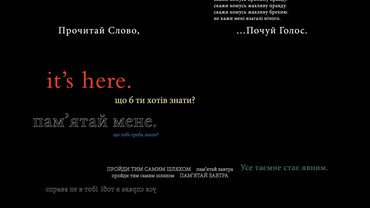
Commission
Douglas Gordon
Undergroundoverheard
Douglas Gordon’s undergroundoverheard (2023) will be unveiled at the new Dean Street entrance of the Tottenham Court Road station on February 1, 2024, as part of the Transport for London (TfL) Elizabeth Line, which opened for service in 2022. Installed on a large digital screen on the main wall of the new ticket hall, the video installation builds on Gordon’s text-based artworks that use short statements to make the reader speculate; for the first time, these have been translated into several of the most widely used languages in London, reflecting and celebrating the diversity of the surrounding Soho neighborhood. At seven stations on the Elizabeth Line, the Crossrail Art Programme commissioned public artworks that have been designed to interact both physically and conceptually with their sites.
Douglas Gordon, undergroundoverheard, 2023 (still) © Studio lost but found/VG Bild-Kunst, Bonn, Germany 2024
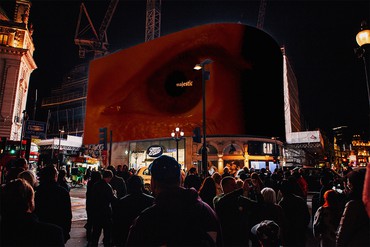
Public Installation
Douglas Gordon
if when why what
December 8–31, 2022, 8:22pm daily
Piccadilly Lights, London
circa.art
Beginning Thursday, December 8, Douglas Gordon will take over the Piccadilly Lights advertising screen in London’s Piccadilly Circus, as well as a global network of screens in cities including Berlin, Melbourne, Milan, New York, and Seoul, nightly for three minutes at 20:22 (8:22pm) local time throughout December, with his new film, if when why what (2018–22). The never-before-seen work examines the history of the surrounding area, in particular Soho’s relationship with the erotic entertainment industry, focusing on the neighborhood’s iconic neon signage. The project is presented by the Cultural Institute of Radical Contemporary Art (CIRCA) in conjunction with the exhibition Douglas Gordon: Neon Ark at Gagosian, Davies Street, London, and will also be viewable online on the CIRCA website.
Rendering of Douglas Gordon’s if when why what (2018–22) on Piccadilly Lights, London

Francesca Woodman
Ahead of the first exhibition of Francesca Woodman’s photographs at Gagosian, director Putri Tan speaks with historian and curator Corey Keller about new insights into the artist’s work. The two unravel themes of the body, space, architecture, and ambiguity.
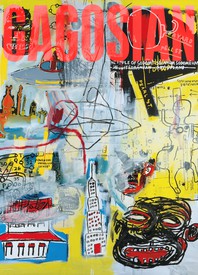
Now available
Gagosian Quarterly Spring 2024
The Spring 2024 issue of Gagosian Quarterly is now available with a fresh cover design featuring Jean-Michel Basquiat’s Lead Plate with Hole (1984).
Simon Hantaï: Azzurro
Join curator Anne Baldassari as she discusses the exhibition Simon Hantaï:Azzurro, Gagosian, Rome, and the significance of blue in the artist’s practice. The show forms part of a triptych with Gagosian’s two previous Hantaï exhibitions, LES NOIRS DU BLANC, LES BLANCS DU NOIR at Le Bourget in 2019–20, and Les blancs de la couleur, la couleur du blanc in New York, in 2022.

Sofia Coppola: Archive
MACK recently published Sofia Coppola: Archive 1999–2023, the first publication to chronicle Coppola’s entire body of work in cinema. Comprised of the filmmaker’s personal photographs, developmental materials, drafted and annotated scripts, collages, and unseen behind-the-scenes photography from all of her films, the monograph offers readers an intimate look into the process behind these films.
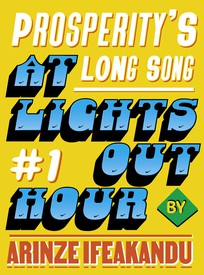
Prosperity’s Long Song #1: At Lights-Out Hour
We present the first installment of a four-part short story by Arinze Ifeakandu. Set at the Marian Boys’ Boarding School in Nigeria, “Prosperity’s Long Song” explores the country’s political upheavals through the lens of ancient mythologies and the mystical power of poetry.

Mount Fuji in Satyajit Ray’s Woodblock Art, Part II
In the first installment of this two-part feature, published in our Winter 2023 edition, novelist and critic Amit Chaudhuri traced the global impacts of woodblock printing. Here, in the second installment, he focuses on the films of Satyajit Ray, demonstrating the enduring influence of the woodblock print on the formal composition of these works.

Adaptability
Adam Dalva looks at recent films born from short stories by the Japanese writer Haruki Murakami and asks, What makes a great adaptation? He considers how the beloved surrealist’s prose particularly lends itself to cinematic interpretation.

Vladimir Kagan’s First Collection: An Interview with Chris Eitel
Chris Eitel, Vladimir Kagan’s protégé and the current director of design and production at Vladimir Kagan Design Group, invited the Quarterly’s Wyatt Allgeier to the brand’s studio in New Jersey, where the two discussed the forthcoming release of the First Collection. The series, now available through holly hunt, reintroduces the first chair and table that Kagan ever designed—part of Eitel’s efforts to honor the furniture avant-gardist’s legacy while carrying the company into the future.

Game Changer: Alexey Brodovitch
Gerry Badger reflects on the persistent influence of the graphic designer and photographer Alexey Brodovitch, the subject of an upcoming exhibition at the Barnes Foundation, Philadelphia.

Outsider Artist
David Frankel considers the life and work of Jeff Perrone, an artist who rejected every standard of success, and reflects on what defines an existence devoted to art.

Goetheanum: Rudolf Steiner and Contemporary Art
Author and artist Ross Simonini reports on a recent trip to the world center of the anthroposophical movement, the Goetheanum in Switzerland, exploring the influence of the movement’s founder and building’s designer Rudolf Steiner on twentieth-century artists.

Duane Hanson: To Shock Ourselves
On the occasion of an exhibition at Fondation Beyeler, novelist Rachel Cusk considers the ethical and aesthetic arrangements that Duane Hanson’s sculpture initiates within the viewer.
